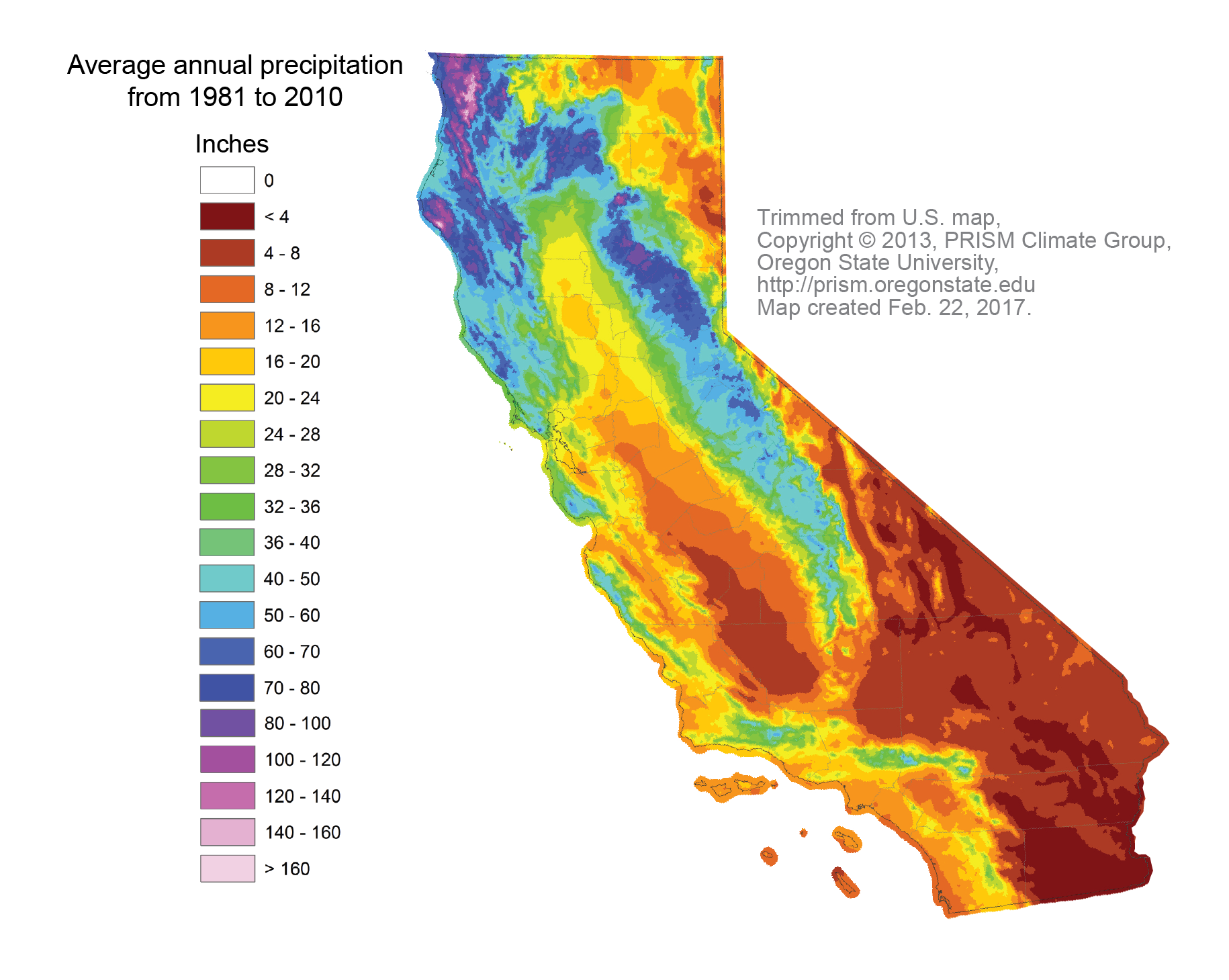Why It’s Important to Prepare for Drought During a Deluge
Part 1 in a Series on Improving California Water Rights Administration and Oversight for Future Droughts

In the midst of the wet winter storms bringing rain and snow to California this year, you might not expect drought preparations to be among the state’s current priorities. And yet, they need to be. In this post, I’ll explore why to set the stage for a blog series that explores what the state can do to prepare for the more frequent and intense droughts we expect in California’s future. The series draws on work my colleagues and I did for California’s Fourth Climate Change Assessment.
The water management challenges California faces during wet and dry times are interdependent. A root cause is California’s unique precipitation regime, which is highly variable across both time and space. First, the amount of precipitation California receives can vary significantly from year to year, bouncing between different gradations of wet and dry with essentially no “average” years (see Figure 1). Second, in any particular year, rain and snow fall mainly during the cooler months and are focused in the north coast and the Sierra Nevada (see Figure 2). And the times and places water is most in demand—during the warmer months, along the central and southern coast, and in the Central Valley—are not those in which water is naturally the most abundant. To address these mismatched patterns of supply and demand, extensive networks of storage and conveyance infrastructure redistribute water in time and space. But these systems have important limits and vulnerabilities. They create interdependencies that give water management decisions made in one time and place potentially far-reaching impacts.

As a result, how water is managed during wetter times affects what water management options are available during droughts and how droughts impact people and ecosystems. Water storage is one important connection. For example, adequately recharging groundwater during wetter times helps ensure that this critical water reserve is available when surface water is scarce. It does so by maintaining groundwater at levels local wells and groundwater dependent ecosystems can access, by keeping seawater intrusion at bay in coastal areas, and by preventing land subsidence that results in aquifer compaction and permanent reduction of groundwater storage capacity. However, reducing drought impacts is not simply a matter of capturing and storing more water in reservoirs and aquifers. Social, physical, and biological factors make the connections between wet-year and dry-year water management more complex. For example, when water is managed to allow ecosystems and species to recover adequately following droughts, they will be more drought resilient and have greater long-term viability. In some areas, this may require keeping more water in rivers and streams during times of higher flow to produce the functional flows needed to maintain habitat and support the reproduction and migration of native species.
Past droughts have challenged California’s water management institutions, and climate change is raising the stakes for effective drought response. As recent experience with droughts (and floods) has highlighted, California’s water infrastructure and institutions are not adequately prepared to meet all the challenges associated with these hydrologic extremes. Water management decisions and actions during droughts have not always been timely, well thought out, fair, or effective. As a result, certain regions, groups of people, and ecosystems have experienced disproportionate drought impacts, and California’s water systems are less resilient than they could be. Climate change is already beginning to heighten the state’s resource management challenges by increasing the likelihood of the hydrologic extremes that lead to flooding, droughts, and wildfires. Scientists expect this trend, which includes more frequent and intense droughts, to continue and intensify. To meet the challenge, the state needs to act proactively.
Significant advance work is needed to ensure that California’s limited water supplies are managed fairly and effectively during future droughts. This work will have broad benefits for California water management. Although legislators, government agencies, and other water managers have developed critical innovations during and after past droughts, attention, resources, and political will have generally dissipated before important lessons learned from those droughts were fully processed and acted upon. This pattern must change. Notably, the work needed for drought planning and preparation is not solely about droughts. Instead, state water decision makers need to think about water management more holistically, because decisions made regarding, or during, one set of hydrologic conditions can have important implications for people and ecosystems under others. Effectively adapting California water management to a future of increasing hydrologic extremes will not depend on reducing uncertainty about the specific timing of upcoming wet or dry periods, a potentially impossible goal. Instead, it will require developing and implementing practices that make water management more robust and resilient to extremes, whenever they occur. Recognizing and addressing interdependencies across the hydrologic spectrum will be key.
This brings me to the take-home message of this blog series (and the reports it is based on):
The state can—and should—do its best to prepare for future droughts by proactively identifying clear priorities and goals, developing strategies to protect and achieve them, and improving the information and tools that guide decision making during drought emergencies.
The rest of the posts in this series will flesh out this argument and present a conceptual roadmap for action in the particularly salient context of California water rights administration and oversight.





Reader Comments